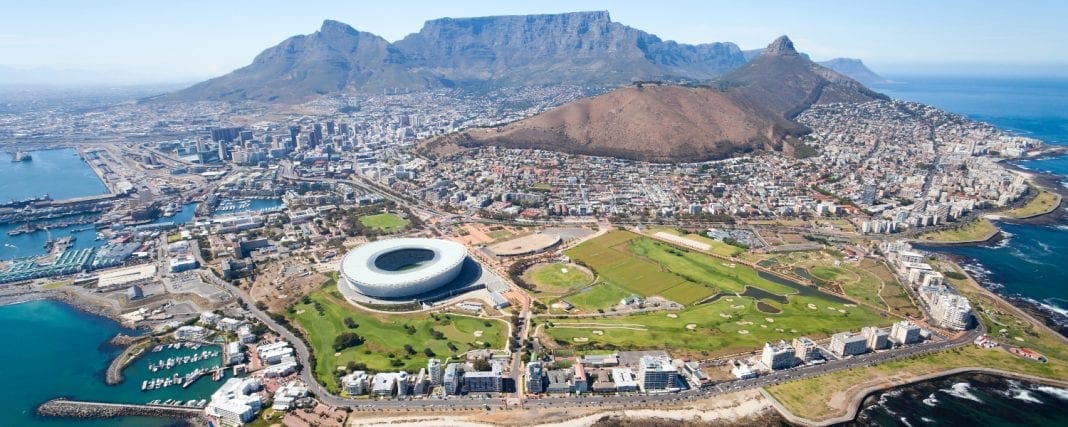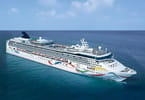GIVERNY – There is something second nature about the landscapes of the French region of Normandy. After all, most visitors have an image of these iconic locales etched in their consciousness long before they even arrive. It’s like a déjà vu, owing much to the 19th century artistic movement instigated by the artists called the impressionists.
The dramatic skies at the beaches of Deauville; the picturesque much-painted quaint harbor of Honfleur; the domed cliffs of Etretat; the Cathedral at Rouen or the simple beauty of Claude Monet’s quiet gardens at Giverny. All of these sites have been immortalized by the canvases of the impressionists who, lead by the galvanizing figure of Monet, revolutionized modern art.
A summer festival in Normandy has begun to draw pilgrims to impressionism. Visitors are encouraged to discover the movement’s roots in the towns, villages, and landscapes of this region of France just north of Paris. The characteristic light and dramatic landscapes here have attracted generations of artists and the much-touted festival is a milestone for impressionism. It is a homecoming of sorts.
This French region on the country’s northern shores was the birthplace of a movement that went on to change artistic perceptions of the natural world.
“Impressionism was the result of a long evolution, which began on the Normand coast and in the Seine valley in the 1820s after the meeting of English avant-garde artists like Turner, Bonington, and Cotman, and their French counterparts Gericault, Delacroix, Isabey,” said Jacques-Sylvain Klein, the director of the Impressionist Normandy festival and also the author of the publication, Normandy, cradle of impressionism.
“The movement progressively evolved here from earlier interest in nature, pre-impressionism, and finally in the 1870s when we really reached the impressionist period,” he continued.
While a grand tour of Europe and its icons of artistic and cultural history have been a longstanding tradition for over three hundred years, this festival now adds Normandy to that historic pilgrimage route allowing visitors to follow the steps that led to a movement that brought painting from depictions of the bourgeois strolling along beaches in aristocratic settings to simple appreciation of landscape, nature, the light, and its myriad of textures.
The road to impressionism left its mark here with the experimentations of artists like Jean-Baptiste-Camille Corot, the landscapes of Dutch painter Johan Barthold Jongkind, and even the British artist J M W Turner, who all show Norman connections.
But it was perhaps the painterly brushstrokes of Trouville beach scenes and plein air works of Eugene Boudin that lead to the revolutionary discoveries of his younger disciple, Claude Monet. It was Monet’s 1872 painting Impression, Sunrise with its loose adaptation of color and light on the harbor in Le Havre which became the incarnation of the term impressionism; a direction in art that prized instantaneous loose impressions of color and mood to the landscape.
Through its hundreds of events and exhibitions, this summers multi-disciplinary festival Impressionist Normandy delivers a well-crafted story of the development of impressionism through it’s past, the landscapes in which it was born, and even the movement’s continuing influences on artistic creation.
This event, which runs through September, was the brainchild of former French Prime Minister Laurent Fabius. It features two hundred exhibitions throughout one hundred villages and towns of Normandy. The festival is expected to attract several hundred thousand visitors to the region.
And while you may not find the bulk of the masterpieces of the movement which have long-ago made their way to Parisian and international collections; memorable temporary exhibitions, local collections, and the genuine sites where impressionism developed draw visitors into the world of 19th century creation.
In the small commune of Honfleur on the southern banks of the estuary of the River Seine is the Eugene Boudin Museum, now hosting the exhibition Honfleur, Between Tradition and Modernity, 1820-1900. Streets lined with historic houses characterize Honfleur, its small cafes and immediately recognizable port-views. This was also the one-time home of Euguene Boudin, and this comprehensive pre-impressionist focused exhibition lays the groundwork through the paintings of Camille Corot, Gustave Courbet, and Eugene Boudin, who would encourage Claude Monet to begin taking his paints outdoors.
The changing depictions of the beaches of Normandy are characteristic of impressionist’s changing view of the canvas. From beach scenes that prioritized aristocratic life of the day – parasols and finely dressed ladies accompanied by bourgeois gentlemen, the impressionists blurred the figures and incorporated the landscape as a unified plane.
“These beach scenes were a revolution at the time,” said Rosaleen Aussenac, a guide at the Eugene Boudin Museum. “In the 19th century when you painted people, you always had a main character – a princess or an empress around whom you had the various sub-characters. But the changes came when suddenly you were unsure of just who the main character was and everybody was at the same level. This was a very strange notion in their day.”
A short drive inland is the city of Caen, a one-time ducal estate founded by William the Conqueror in the 11th century. Here the Caen Museum of Fine Arts is putting on Impressionist prints, treasures from the Bibliotheque Nationale de France. The exhibition of 120 works includes those authored by Edgar Degas, Edouard Manet, Camille Pisarro, and the less painterly works of Mary Cassatt. This exhibition reveals little more than how the whimsical nature of impressionism translated poorly to the print medium and validates Claude Monet’s refusal to be involved in the printmaking process.
At the port-city of Le Havre, the Malraux Museum boasts a respectable collection of impressionist paintings. This week the museum will launch the exhibition Unpublished Degas: Degas from the Senn Donation, a collection of some 205 unpublished drawing and pastels of Edgar Degas amassed by 19th century cotton merchant and art collector Olivier Senn.
The town of Rouen is another iconic stop on the impressionist route in Normandy. Peering out from a one-time undergarment shop across from the cathedral at Rouen gives you what is probably the most unique view of the very locale where Claude Monet painted some thirty now-famous views of this astounding place of worship.
Many of the now famous paintings of the Rouen cathedral, executed by Monet in 1892 and 1893, are astonishingly on view at the most comprehensive exhibition of the festival, A city for Impressionism: Monet, Pissarro, and Gaughin in Rouen. Presented at the Rouen Fine Arts Museum, 130 important works have been collected from private and public collection, some of which have never been exhibited in France.
Long after he had left his mark on a generation of artists, the stout middle-aged, beleaguered white-bearded Claude Monet and his by then extended family settled in the small Normand village of Giverny. It was here in the Normand landscape where he once again rediscovered a passion for living. Claiming he was “only good for painting and gardening,” over the following years he went about the creation of his living masterpiece; freely-planted gardens, a small lake, and Japanese bridge that he would paint profusely in his later years.
“With Giverny, Monet was able to meld his two passions as he literally went on living as a kind of a hermit here,” said Laurent Echaubard, vice president of the Giverny-based Foundation Claude Monet, “As he grew older he would develop health problems and Giverny would become his single source of inspiration. He would go on to paint here until his last breath.”
WHAT TO TAKE AWAY FROM THIS ARTICLE:
- “Impressionism was the result of a long evolution, which began on the Normand coast and in the Seine valley in the 1820s after the meeting of English avant-garde artists like Turner, Bonington, and Cotman, and their French counterparts Gericault, Delacroix, Isabey,” said Jacques-Sylvain Klein, the director of the Impressionist Normandy festival and also the author of the publication, Normandy, cradle of impressionism.
- While a grand tour of Europe and its icons of artistic and cultural history have been a longstanding tradition for over three hundred years, this festival now adds Normandy to that historic pilgrimage route allowing visitors to follow the steps that led to a movement that brought painting from depictions of the bourgeois strolling along beaches in aristocratic settings to simple appreciation of landscape, nature, the light, and its myriad of textures.
- Through its hundreds of events and exhibitions, this summers multi-disciplinary festival Impressionist Normandy delivers a well-crafted story of the development of impressionism through it's past, the landscapes in which it was born, and even the movement's continuing influences on artistic creation.






















